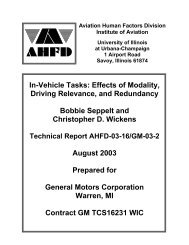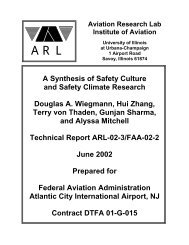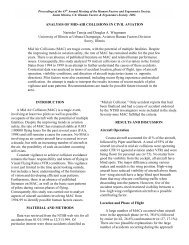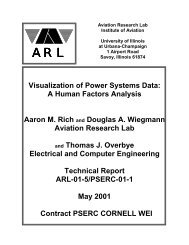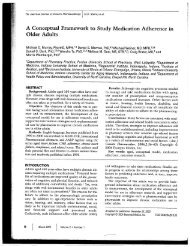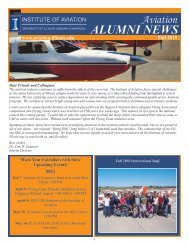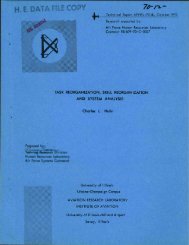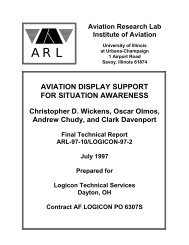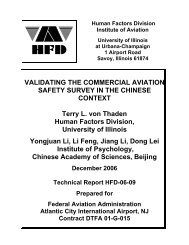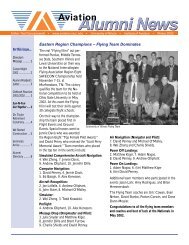Defining and Assessing Safety Culture in High Reliability Systems
Defining and Assessing Safety Culture in High Reliability Systems
Defining and Assessing Safety Culture in High Reliability Systems
You also want an ePaper? Increase the reach of your titles
YUMPU automatically turns print PDFs into web optimized ePapers that Google loves.
Rogers, E. D., Miles, W. G., & Biggs, W. D. (1980). The factor replicability of the Litw<strong>in</strong><br />
<strong>and</strong> Str<strong>in</strong>ger organizational climate questionnaire: An <strong>in</strong>ter- <strong>and</strong> <strong>in</strong>tra-organizational<br />
assessment. Journal of Management, 6(1), 65-78.<br />
The Litw<strong>in</strong> <strong>and</strong> Str<strong>in</strong>ger Organizational Climate Questionnaire (LSOCQ) is one of the most<br />
widely used, perception-based climate <strong>in</strong>struments. This 50-item <strong>in</strong>strument is designed to tap a<br />
priori scales that are suggested to measure the separate dimensions that constitute organizational<br />
climate. The n<strong>in</strong>e scales are def<strong>in</strong>ed as:<br />
(1) Structure,<br />
(2) Responsibility,<br />
(3) Reward,<br />
(4) Risk,<br />
(5) Warmth,<br />
(6) Support,<br />
(7) St<strong>and</strong>ards,<br />
(8) Conflict, <strong>and</strong><br />
(9) Identity.<br />
In this study, four factor analytic studies of LSOCQ are compared to assess the consistency of<br />
the <strong>in</strong>strument’s factor structure when adm<strong>in</strong>istered to different organizational populations. In<br />
addition, separate factor analytic results of the LSOCQ for 3 functional subgroups of a s<strong>in</strong>gle<br />
organization are compared to <strong>in</strong>vestigate the LSOCQ’s factor consistency with<strong>in</strong> a s<strong>in</strong>gle<br />
organization. The results show that the n<strong>in</strong>e a priori scales do not represent separate, <strong>in</strong>dependent<br />
dimensions of organization climate, <strong>and</strong> there is no consistent factor analytic structure across<br />
different organizations, or even across different functional subgroups with<strong>in</strong> a s<strong>in</strong>gle<br />
organization. The authors conclude that the LSOCQ is situation or organization specific, <strong>in</strong>stead<br />
of be<strong>in</strong>g consistent across organizations.<br />
Rollenhagen, C. (1999). Organizational factors: their def<strong>in</strong>ition <strong>and</strong> <strong>in</strong>fluence on nuclear<br />
safety. A framework for assessment of organizational characteristics <strong>and</strong> their <strong>in</strong>fluences<br />
on safety (ERB FI4S-CT98-0051).<br />
Two different analytical strategies <strong>in</strong> underst<strong>and</strong><strong>in</strong>g the <strong>in</strong>fluence of human <strong>and</strong> organizational<br />
factors on safety, namely, top-down <strong>and</strong> bottom-up approaches, <strong>and</strong> their associated advantages<br />
<strong>and</strong> disadvantages are discussed. A bottom-up conceptual model about organizational factors<br />
related to safety was developed. This model is anchored <strong>in</strong> three fundamental conceptual<br />
categories: activities, resources, <strong>and</strong> the technological core system. The model also conta<strong>in</strong>s a<br />
top-down perspective, which is represented by two abstract organizational dimensions, the<br />
degree of <strong>in</strong>tegration <strong>and</strong> the degree of formalism. An extended model that takes <strong>in</strong>to account the<br />
external <strong>in</strong>fluences is also presented. Some specific assessment methods are illustrated by the<br />
example of the Swedish nuclear <strong>in</strong>dustry.<br />
36




